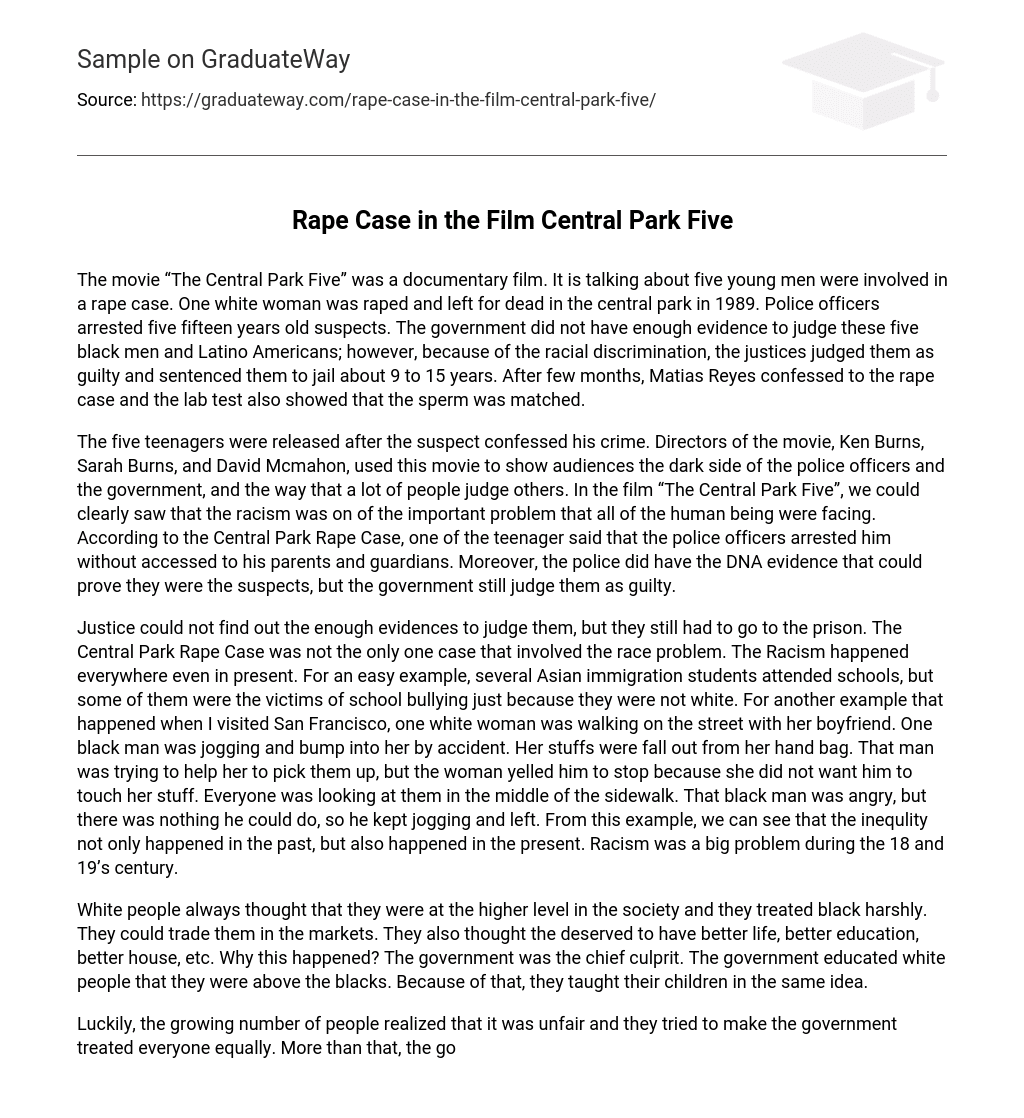In 1989, the documentary “The Central Park Five” delves into a rape case involving five young black and Latino American men who were arrested as suspects. Despite insufficient evidence, racial bias influenced the justices to declare them guilty and sentence them to prison for about 9 to 15 years. However, several months later, Matias Reyes confessed to the rape, and subsequent lab testing confirmed his sperm matched.
The five teenagers were freed following the suspect’s admission of guilt. The documentary “The Central Park Five,” directed by Ken Burns, Sarah Burns, and David Mcmahon, aimed to expose the corrupt practices of law enforcement and the government while also addressing society’s tendency to make snap judgments. The film emphasized the widespread issue of racism that affects everyone. In relation to the Central Park Rape Case, one of the teens asserted being apprehended without parental or guardian supervision. Despite no DNA evidence substantiating their culpability, authorities still deemed them guilty.
Despite the lack of sufficient evidence to convict them, Justice still sent them to prison. The Central Park Rape Case was not the only instance where race played a role, as racism remains prevalent today.
In addition, racism is evident in other situations. One example is the bullying faced by Asian immigrant students in schools solely because of their non-white ethnicity.
Similarly, during my visit to San Francisco, I witnessed an incident involving a white woman and a black man. While walking with her boyfriend, the woman accidentally bumped into the jogging black man causing her belongings to fall out of her handbag. Despite his attempts to help pick them up, she vehemently refused his assistance due to his race and not wanting him touching her things. This scene caught the attention of bystanders as the frustrated but helpless man had no choice but to continue his jog and leave.
This particular example serves as undeniable proof that inequality persists both historically and currently. Racism has been an enduring issue throughout the 18th and 19th centuries.
Throughout history, white individuals maintained a belief in their superiority over black people and subjected them to harsh treatment, including participation in trading practices. They claimed entitlement to better living conditions, education, and housing. The government contributed to the perpetuation of this mindset by educating white individuals about their presumed higher status compared to blacks. Consequently, this belief was passed down from one generation to another.
Fortunately, there has been a growing awareness of injustice and a dedication to fairness in society. Moreover, the government has implemented laws to safeguard individuals irrespective of their race. Nonetheless, racism remains prevalent as black individuals face unfair labeling as criminals, leading to prejudiced judgments. It is unacceptable for racism to persist in contemporary times. Nevertheless, strides have been taken with the election of a black president in America, showcasing the country’s resolve to foster equality and ensure equal rights for all regardless of their background or ethnicity.





